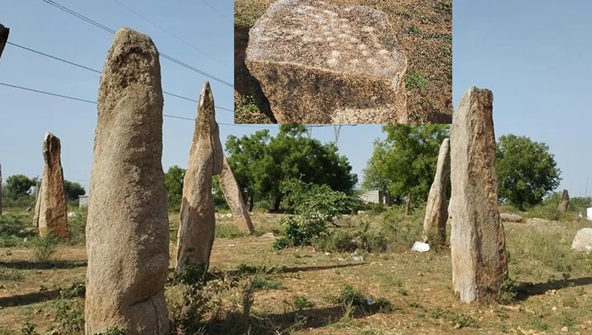
The Mudumal Megalithic Menhirs site, located in Narayanpet district, Telangana, has been added to the UNESCO World Heritage Centre’s tentative list in 2025. Dating back 3,500 to 4,000 years, this site represents a significant remnant of the Megalithic tradition in South Asia.
Key Features of the Site
- Ancient Megalithic Alignments
- The site contains menhirs (standing stones), carefully arranged to align with celestial events, indicating a deep understanding of astronomy by ancient civilizations.
- On the summit of the nearby hillock, there is a remarkable cuboid-shaped rock bearing cup marks that replicate the constellation of Ursa Major.
- In Hindu mythology Ursa Major is known as the Saptarishi (Seven Sages). The positioning of two stars in this constellation, Merak and Dubhe, points to the North Star, a crucial navigational guide for centuries.
- Part of a Larger Megalithic Landscape
- Includes burial sites, stone circles, and inscribed rocks, reflecting the funerary and ritualistic traditions of the era.
- Cultural and Religious Significance
- The menhirs are sacred to local communities, who have integrated them into their beliefs and traditions.
- The stones are known as “Niluralla Thimmappa” (Thimmappa of the Standing Stones).
- A specific menhir is worshipped as Goddess Yellamma, showing continuity between ancient and present-day spiritual practices.
What is a Menhir?
- A man-made standing stone, often tapered at the top.
- Usually large in size, erected for ritual, astronomical, or commemorative purposes.
- One of the largest known menhirs, Grand Menhir Brisé (Great Broken Menhir) in Brittany, France, once stood at 20.6 meters tall.
(Sources: UNESCO, The Indian Express)


